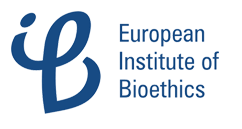Professor in the Faculty of Medicine
Founding Director of the Faculty of Law's Centre for Medicine,
Ethics and Law at McGill University
Facing the unprecedented challenge of reprogenetics
WHAT HAS CHANGED IN HUMAN REPRODUCTION?
Let's have a look, first, at the characteristics of human reproduction around fifty years ago:
Whether and when a child was conceived was largely a matter of chance (one could eliminate chance, of course, by not engaging in sexual intercourse, or reduce it by much less effective contraception than is available today). Where it was conceived was always in a woman's body. How life was transmitted to the child was through sexual reproduction. What genetic heritage the child received was determined by the natural recombination of the genes carried in the female parent's ovum and the male parent's sperm. Those genes were received by the child in their natural or unaltered state. The sex of the child was a matter of chance.
Voices Across Boundaries Vol.1 No.2: Designer Babies
- genetics
- NRT
- code of ethics
